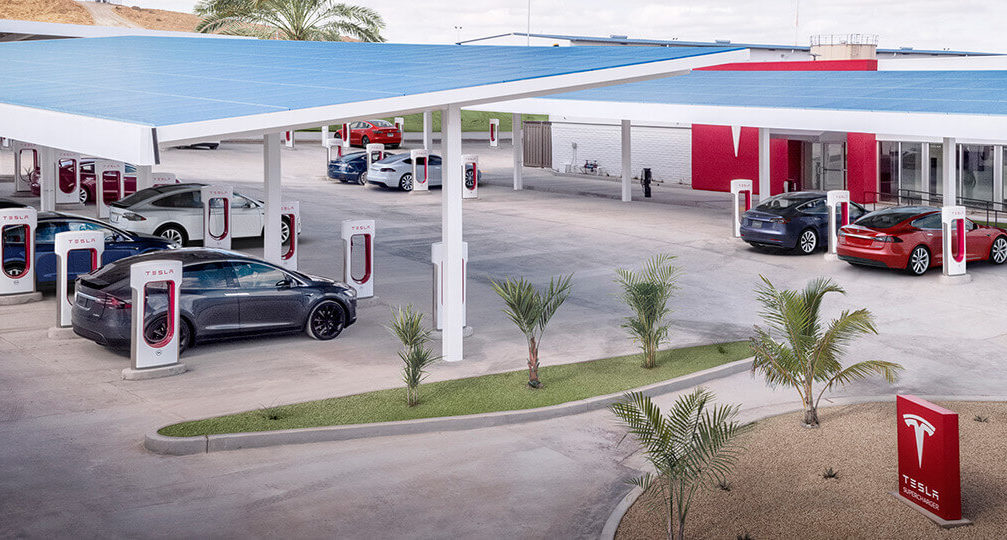Welcome to a FREE preview of our weekly exclusive! Each week our team goes ‘Beyond the News’ and handcrafts a special edition that includes our thoughts on the biggest stories, why it matters, and how it could impact the future.
You can receive this newsletter along with all of our other members-exclusive newsletters, become a premium member for just $3/month. Your support goes a long way for us behind the scenes! Thank you.
—
A couple of weeks ago, IONITY revealed their new “Halo” charger rated at 350 kW that’s supposed to charge EVs 220 miles in ten minutes at some point in the future. It sounds pretty great on the outset, and when claims of “more”, “faster”, and “better” are rewarded with headlines, there’s no wonder that this type of tech is being produced well before any electric cars can actually utilize it. Three cheers for progress, yeah?
I’m not so sure.
While I understand the push to make EV charging faster so drivers can have a one-to-one trade off with their gasoline fill up experience, is that what’s going to be in demand as battery-powered transportation takes off? There’s also the question of whether battery health is going to take a huge dive with that sort of charging. I’m probably a bit biased towards Elon Musk’s opinion on such things (Tesla is leading the battery revolution, after all), so when he says 350 kW is a battery killer, I believe him. Will the tech catch up? I don’t know. But, I’m more questioning whether it needs to.
There are some considerable differences and advantages that electric cars have over ICE cars, and I don’t just mean in the emissions sense. With an ICE vehicle, it’s not (realistically) possible to have a nozzle attached to your gas tank in your garage overnight while you sleep, enabling you to wake up to a full tank each morning. You can’t do that while you’re at work, either, nor while running errands. Swap “nozzle” for a charging cable and you can with an EV, though. I really think this is going to be the biggest distinction in our ICE-driven world today and the battery-driven one in the future. Fast charging is great while you need it, but someday we won’t need it. Will we ever need “Halo” charging?
There’s still some time yet before EV chargers are as ubiquitous as wall chargers (and I guess technically those can be EV chargers, too), but hey – if airports and coffee bars can finally catch up to laptop and smartphone needs (plugs everywhere!), so can entities with parking lots. Not to mention, all that happened as a team effort by the tech companies and the plug-providing businesses: Better batteries plus better access to electricity equals electronic happiness (and expansion) for the consumer.
I know there was a period of time when longer cables were phone companies’ answer to portable phone conversations before cordless phones came along, which I admittedly only know because I like classic movies and TV shows. To me, this is a bit of a metaphor for what’s going on with EV charging. “Halo” type chargers are kind of the equivalent to longer telephone cords, and history shows that more of one thing isn’t always better.
The cordless phones are kind of a good metaphor, too. I remember (first hand) how long it took before static issues were eliminated. “Hold on, let me switch to the other phone because I’m too far from the base,” was a frequent conversation comment, and then multi-base systems were offered to solve that one, too. I see the static as the issue of long charging times and the phone base in every room as the faster and faster chargers. We’ve kind of foregone home phones altogether now thanks to cell phones, but to me that’s kind of like imagining an EV plug in every parking spot regardless of whether you’re a homeowner or a renter or a parking garage frequenter.
Once upon a time, cell phone batteries were huge, heavy, and held very little charge. We still complain about them since there are more and more power-hungry features added, but do we opt for a rotary phone over the issue? Nah. We keep chargers in our cars, in the wall at work, in our bags, and so forth. I think ultimately we’ll go in that direction with EVs rather than the hypercharger one, and it will change the landscape. Literally.











